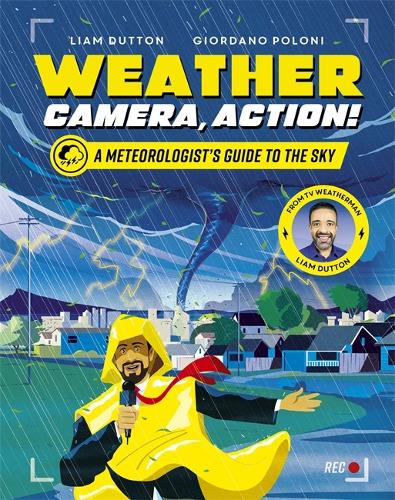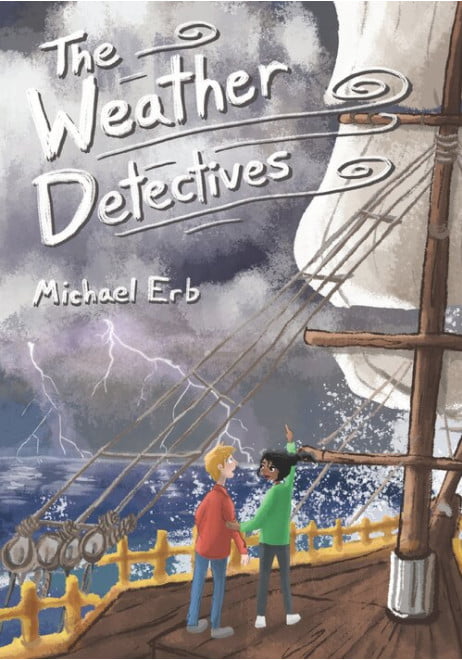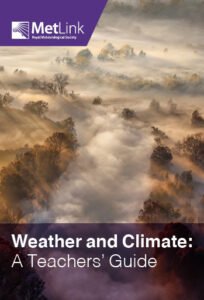Below are some of our favourite weather and climate books aimed at children, young people and their teachers.
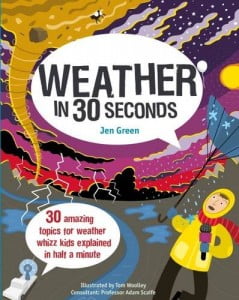
Weather in 30s
Author: Dr. Jen Green consultant Prof Adam Scaife
Year: 2015
Publisher: Ivy Kids
Suggested age range: KS2/3 (7-14)
Price: £9.99
A lovely short book, with short, accurate explanations eg, ideas for simple experiments eg and calculations to demonstrate atmospheric processes and helpful illustrations. It was a great idea to put a glossary at the start of each section.
The book is divided into 6 sections: Earth’s weather, climate and seasons, all kinds of weather, extreme weather, predicting the weather and climate change. I have slight reservations about some of the statements in the climate change section, but would otherwise definitely recommend this book.
This book could easily be used by KS3 geography teachers in the classroom.
Some comments from students at the lower end of the recommended age range:
Annabel and Grace: “I really like this book because it is really colourful and creative. The illustrations are very good and quite funny. The best book ever!”
Sophie and Pippa: “In this book you will learn everything from earth’s weather and predicting the weather to climate change. The book looks very interesting because every page is a different colour. There are lots of interesting facts in this book and I don’t know which of them is my favourite so I am going to choose all of them.”
A review by Hannah, at the upper end of the recommended range:
‘Weather in 30s’ is exactly what its title suggests – a concise collection of weather related topics explained fully and clearly in this interesting, educational volume. The summaries at the end of each page help the reader quickly understand the topic on the page, and the 3 minute missions at the ends of some of the pages help you to understand further the science of it, in a fun way. There is a glossary at the start of each chapter which gives a simple, clear explanation of some of the harder words. Also, the fantastic illustrations contribute to the text, helping to give a clear picture. The actual worded content is also great- it is easy to understand and concise. The book successfully taught me about the covered topics; I understood them well. I’d definitely recommend it!
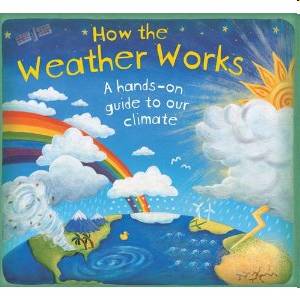
How the Weather Works
Author: Christiane Dorion and Beverley Young
Year: 2011
Publisher: Templar
Suggested age range: KS2/3 (7-14)
Price: £12.99
If you are interested in the weather or have a question about the wind, rain or clouds then this book is for you. How the weather works is a hands-on book with flaps to open, tabs to pull, wheels to turn, and a giant pop-up of a hurricane. It is packed with illustrations along with interesting facts and is packed full of information. There some experiments to try out yourself and things to make so you can take your own weather observations. You could read this book from front to back or find out one or two facts. Younger children aged 5-7 may enjoy the pop-ups and interactive pictures but to get the most from this book I suggest the reader needs to be 9-11 years old. I really enjoyed it.
By Amber Bentley (Aged 11)
In just 16 pages, this wonderful book covers the structure of the atmosphere, solar radiation, the water cycle, clouds, fronts, convection, air pressure, air masses, the global atmospheric circulation, making weather observations, forecasting, synoptic charts, hurricanes, regional climate, palaeoclimates and anthropogenic climate change. With so much information in a very small space, it avoids being dry by using a huge variety of presentation styles, including many diagrams, pop-up models, tabs to pull and wheels to turn. The book covers concepts and uses vocabulary that would usually only be introduced in science and geography lessons at secondary school, but the style makes it accessible to much younger children.
However, my main recommendation about this book is that, unlike some other books aimed at a similar age range, I can’t find a single mistake or oversimplification in it. My one concern is about how long it would last, if small children or a lot of children were using it. The book’s companion, “How the World Works”, won the Royal Society Young People’s Book Prize in 2011.
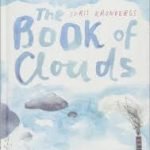
The Book of Clouds
Author: Juris Kronbergs
Year: 2018
Publisher: The Emma Press
Suggested age range: 8+
Price: £9.25 rrp (hardback)
In this delightful, whimsical and charmingly illustrated book, Juris Kronbergs explores the appearance and ephemeral nature of clouds in 26 poems. My favourites include one in which a cloud has a nightmare about evaporating, and one where real cloud names morph into descriptive ones and then into imagined ones. At the end of the book, the author gives ideas about how to write or illustrate a poem. The annotated illustrations are great fun and complement the poems, making the book one that you can look at for much longer than it takes to read the words.
This isn’t a book which will leave you knowing more about the weather – except maybe a few cloud names. However, it will encourage readers to look up at the sky and develop a deeper appreciation of our atmosphere. I was very impressed by the translation – these poems were originally written in Latvian, but the translated rhymes don’t feel contrived.
The Book of Clouds (not to be confused with John Day’s guide of the same name, or Chloe Aridjis’ novel) is officially aimed at 8+ and to some extent, the look of the book is right for an upper primary student. At the younger end of that range, children will find poems and illustrations that make them smile – and teachers will welcome the links with the water cycle. Older readers will appreciate the word play, references and ideas in some of the poems. This is a book that adults, particularly those who appreciate both clouds and poems, will also enjoy.
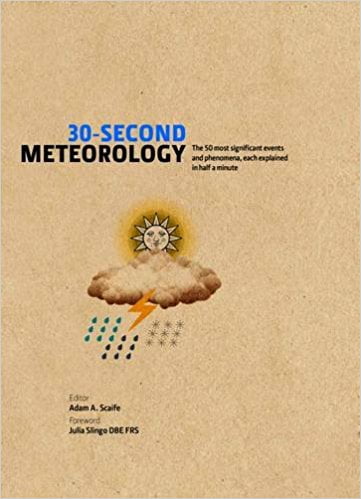
30 Second Meteorology: The 50 Most Significant Events and Phenomena, each explained in Half a Minute
Editor: Adam Scaife
Year: 2016
Publisher: Ivy Press
Suggested age range: 16+
Price:
This is a beautiful and tactile coffee table book, whilst being a handier size than most coffee table books. It consists of seven sections (The elements, The global atmosphere, the Sun, Weather watching and forecasting, can we change the weather, weather cycles and extreme weather), each with a glossary, a handful of topics and profiles of historical leaders in their fields such as Milankovitch, Rossby, Walker and Richardson. The text has been contributed by 9 leading meteorologists from the UK and beyond with each topic consisting of a short description/ explanation, even shorter summaries and a related illustration on the facing page. Good cross referencing and a consistent layout throughout make it a very easy book to dip in to.
Its lack of equations, charts and graphs make it an unintimidating book, although it does occasionally slip into jargon.
This brings us on to the interesting question of who this book is best suited to. I showed it to a group of geography teachers, who thought it was perfect for people like them who ‘ought to know but maybe don’t’. I think maybe this could be extended to include people who ‘would like to know’.
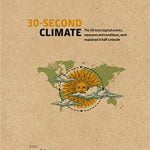
30 Second Climate: The 50 Most Topical Features, Measurements and Phenonema, each explained in Half a Minute
Editor: Joanna D. Haigh
Year: 2019
Publisher: Ivy Press
Suggested age range: 16+
Price: £14.99
This is a beautiful and tactile guide to the climate system; a companion to ‘30 –Second Meteorology’ which came out in 2016. It consists of seven sections (‘The Earth’s Climate System’, ‘Heating and Cooling’, ‘Water’, ‘Life and Biogeochemical Cycles’, ‘Observations and Modelling’, ‘Changing Climate’ and ‘The Future’) each with a glossary, a handful of topics and profiles of historical leaders in their fields such as Köppen, Tyndall, Keeling and Calendar. In her introduction, Joanna Haigh writes “understanding how the climate works is both hugely challenging and endlessly fascinating”- the book looks at what the climate is, how it works, ways in which it can be observed and how it might change in the future.
The text has been contributed by 19 leading meteorologists from the UK and beyond. Each topic consists of a short description/ explanation, accompanied by even shorter summaries and related biographies. Each topic has an illustration on the facing page – not a chart or graph, but an artist’s impression of the subject, created by combining photos with other artwork. The first six sections of 30-Second Climate focus on the historical study and underlying scientific understanding and processes of climate.
However, unsurprisingly, by the time you reach the final, ‘Future’, section the information becomes much more current and I suspect that it will therefore feel quite dated in just a few years.
Comparing it to a similar recent publication – Mark Maslin’s ‘Climate, A very short introduction’, the first thing that stands out is that 30-Second Climate is something to enjoy looking at in odd moments, rather than to put into a pocket or bag to read on the train. Whereas Maslin’s book is designed to be read from beginning to end, 30-Second climate is a very easy book to dip in to – helped by good cross referencing and a consistent layout throughout.
Its lack of equations, charts and graphs make it an unintimidating book, although it does occasionally slip into technical language. It’s not a textbook but would appeal to anyone with basic scientific literacy with an interest in finding out more about the climate system. Susan Solomon’s foreword concludes “It deserves wide readership among those fascinated by the natural environment and our role in preserving it”.
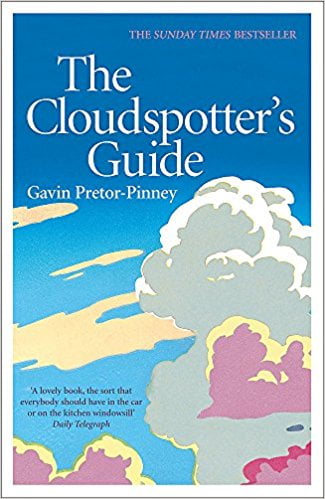
The Cloudspotter’s Guide
Author: Gavin Pretor-Pinney
Year: 2007
Publisher: Sceptre
Suggested age range: 16+
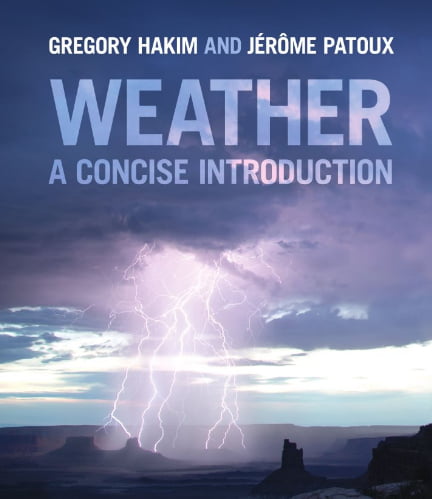
Weather: a concise introduction
Author: Hakim & Patoux
Year: 2018
Publisher: Cambridge University Press
Suggested age range: 16+
Price:

